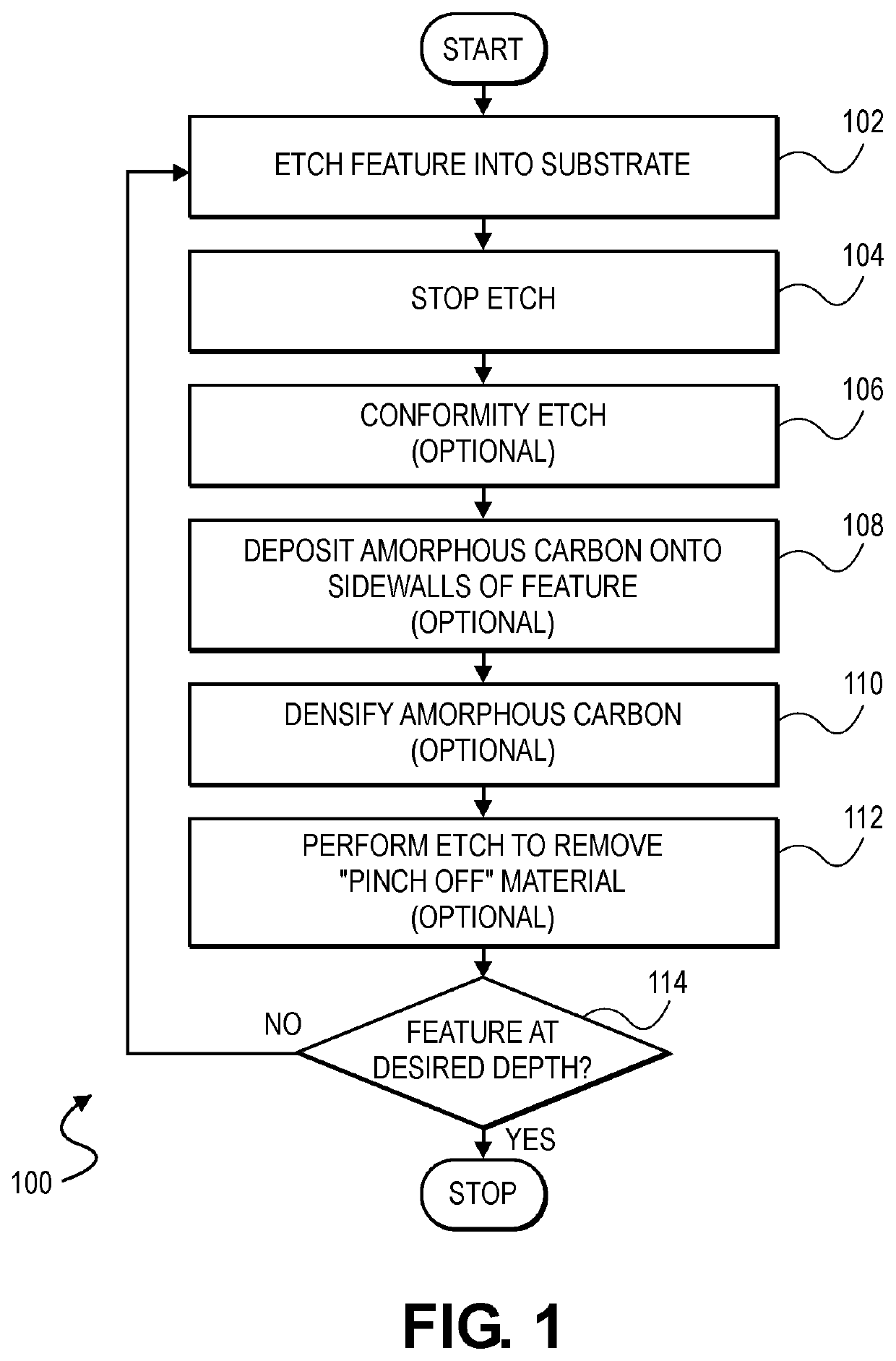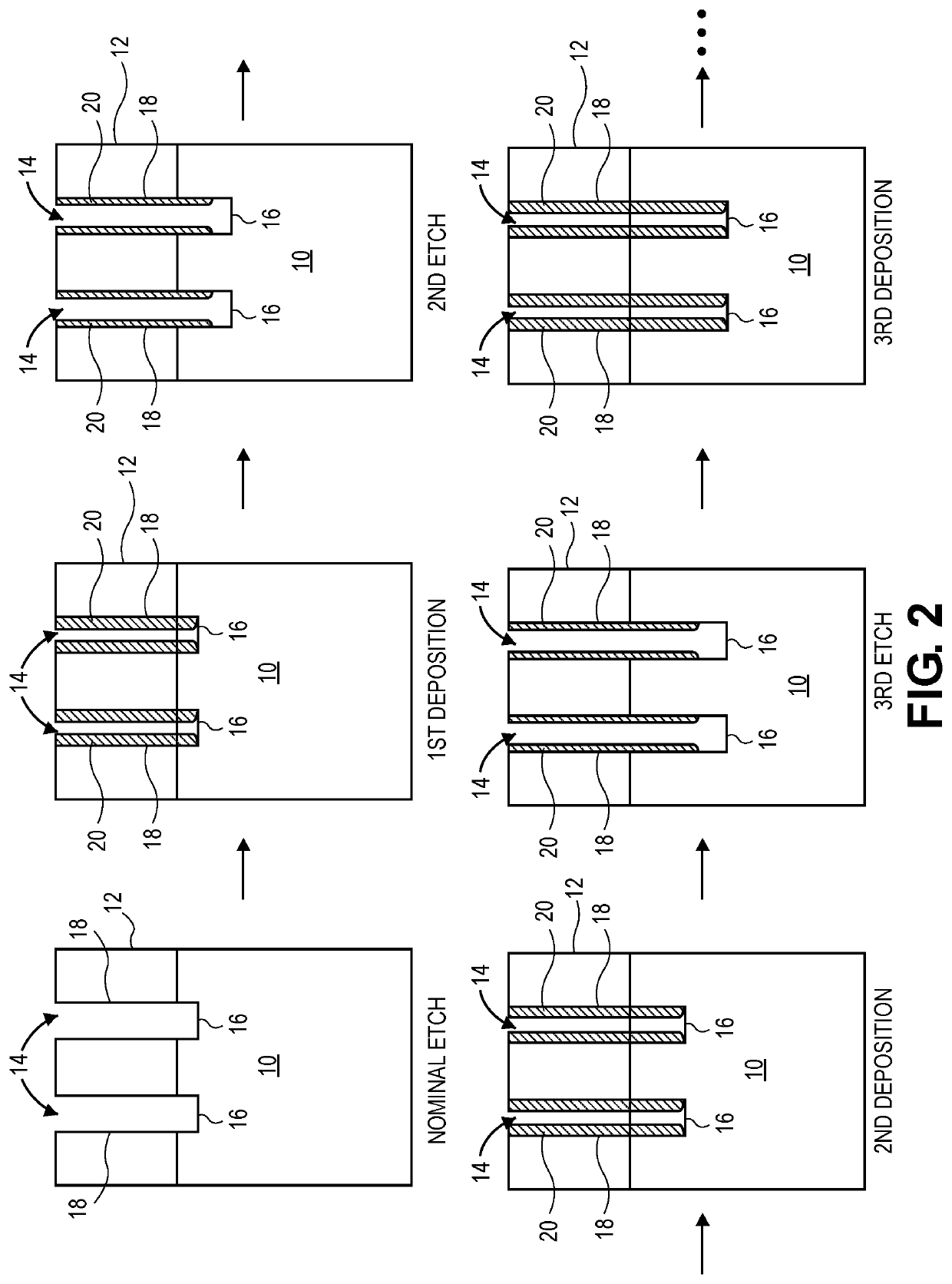Carbon based depositions used for critical dimension control during high aspect ratio feature etches and for forming protective layers
a technology of critical dimension control and deposition, applied in the field of semiconductors, can solve the problems of increasing the width of the feature, reducing the aspect ratio, and difficulty in fabricating extremely high aspect ratio features, and achieves the effects of tight cd control, reduced lateral etching, and high aspect ratio
- Summary
- Abstract
- Description
- Claims
- Application Information
AI Technical Summary
Benefits of technology
Problems solved by technology
Method used
Image
Examples
Embodiment Construction
[0042]The present application will now be described in detail with reference to a few non-exclusive embodiments thereof as illustrated in the accompanying drawings. In the following description, numerous specific details are set forth in order to provide a thorough understanding of the present disclosure. It will be apparent, however, to one skilled in the art, that the present disclosure may be practiced without some or all of these specific details. In other instances, well known process steps and / or structures have not been described in detail in order to not unnecessarily obscure the present disclosure.
[0043]The present application is directed to a semiconductor process for fabricating deep features having extremely high aspect ratios and tight critical dimension control (CD). In one non-exclusive embodiment, the invention is directed to a method of fabricating a semiconductor substrate including (a) vertical etching a feature having sidewalls and a depth into one or more layers...
PUM
| Property | Measurement | Unit |
|---|---|---|
| depth | aaaaa | aaaaa |
| thickness | aaaaa | aaaaa |
| depth | aaaaa | aaaaa |
Abstract
Description
Claims
Application Information
 Login to View More
Login to View More - R&D
- Intellectual Property
- Life Sciences
- Materials
- Tech Scout
- Unparalleled Data Quality
- Higher Quality Content
- 60% Fewer Hallucinations
Browse by: Latest US Patents, China's latest patents, Technical Efficacy Thesaurus, Application Domain, Technology Topic, Popular Technical Reports.
© 2025 PatSnap. All rights reserved.Legal|Privacy policy|Modern Slavery Act Transparency Statement|Sitemap|About US| Contact US: help@patsnap.com



